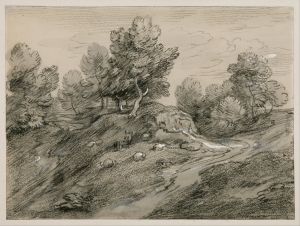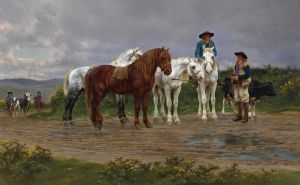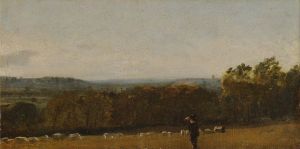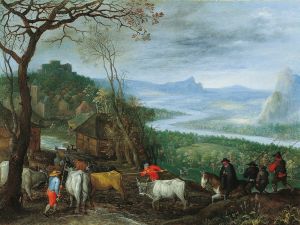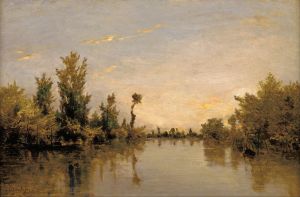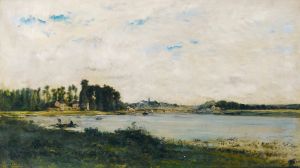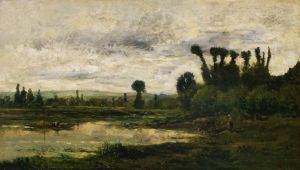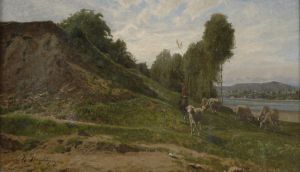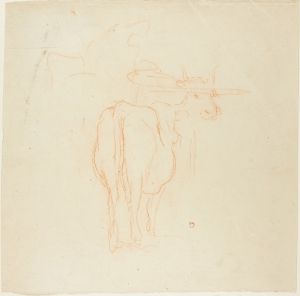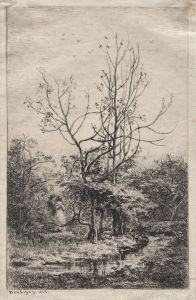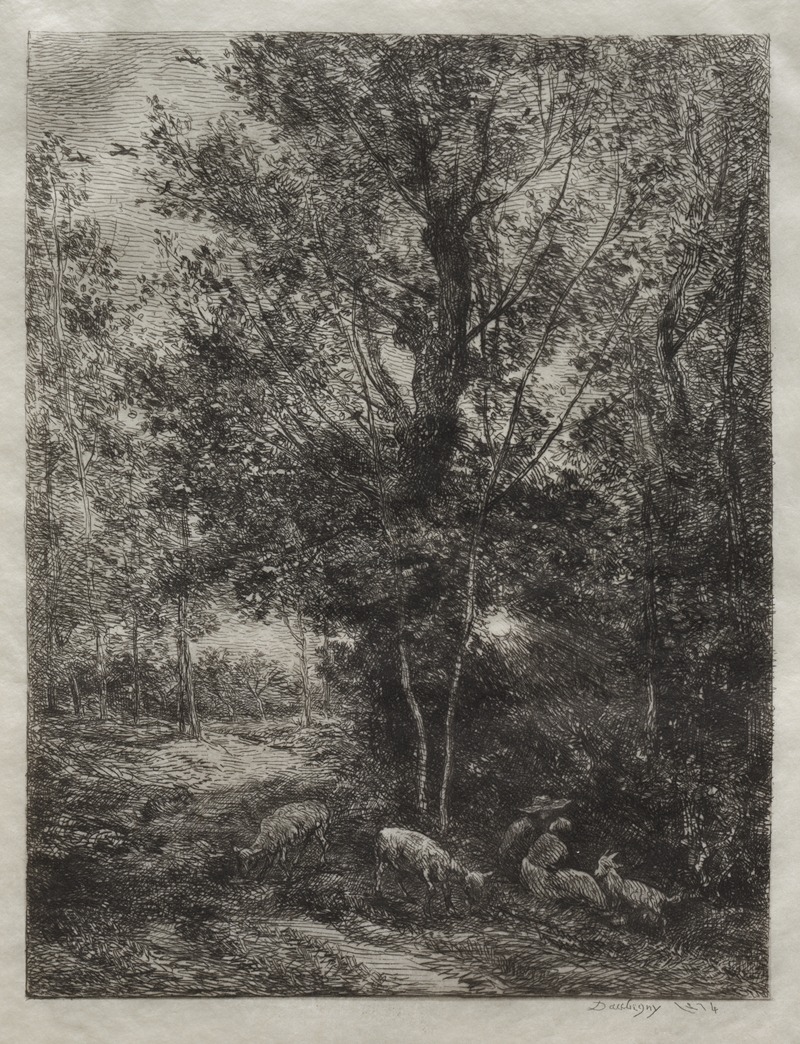
The Shepherd and the Shepherdess
A hand-painted replica of Charles François Daubigny’s masterpiece The Shepherd and the Shepherdess, meticulously crafted by professional artists to capture the true essence of the original. Each piece is created with museum-quality canvas and rare mineral pigments, carefully painted by experienced artists with delicate brushstrokes and rich, layered colors to perfectly recreate the texture of the original artwork. Unlike machine-printed reproductions, this hand-painted version brings the painting to life, infused with the artist’s emotions and skill in every stroke. Whether for personal collection or home decoration, it instantly elevates the artistic atmosphere of any space.
Charles-François Daubigny, a prominent French landscape painter of the 19th century, is widely recognized as one of the key figures of the Barbizon School, a movement that emphasized naturalistic depictions of rural landscapes. Among his many works, The Shepherd and the Shepherdess is a notable example of his artistic style and thematic focus on pastoral life.
Painted in the mid-19th century, The Shepherd and the Shepherdess reflects Daubigny’s deep connection to the French countryside and his commitment to portraying the harmony between humans and nature. The painting depicts a tranquil rural scene, featuring a shepherd and a shepherdess tending to their flock in an open landscape. The figures are integrated into the natural surroundings, emphasizing the unity between people and the environment. Daubigny’s use of soft, naturalistic colors and loose brushwork captures the atmospheric effects of light and shadow, creating a sense of serenity and timelessness.
Daubigny’s approach to landscape painting was innovative for his time. He often worked en plein air (outdoors), which allowed him to observe and depict the changing effects of light and weather with immediacy and accuracy. This technique is evident in The Shepherd and the Shepherdess, where the natural elements are rendered with a sense of spontaneity and vitality. The painting exemplifies Daubigny’s ability to balance detailed observation with an impressionistic sensibility, a quality that would later influence the Impressionist movement.
The exact location depicted in The Shepherd and the Shepherdess is not definitively identified, but it is consistent with the rural settings Daubigny frequently painted, such as the banks of the Oise River or the fields and forests near Barbizon. These areas were central to his artistic practice and served as inspiration for many of his works.
Daubigny’s contributions to landscape painting earned him significant recognition during his lifetime. His works were exhibited at the Paris Salon, and he was awarded the Legion of Honor in 1859. The Shepherd and the Shepherdess is representative of his mature style and his dedication to capturing the beauty and simplicity of rural life.
Today, The Shepherd and the Shepherdess is appreciated as part of Daubigny’s legacy and his role in bridging the Barbizon School and the Impressionist movement. The painting is held in a private collection or museum, though its specific location and provenance may vary depending on the source.





